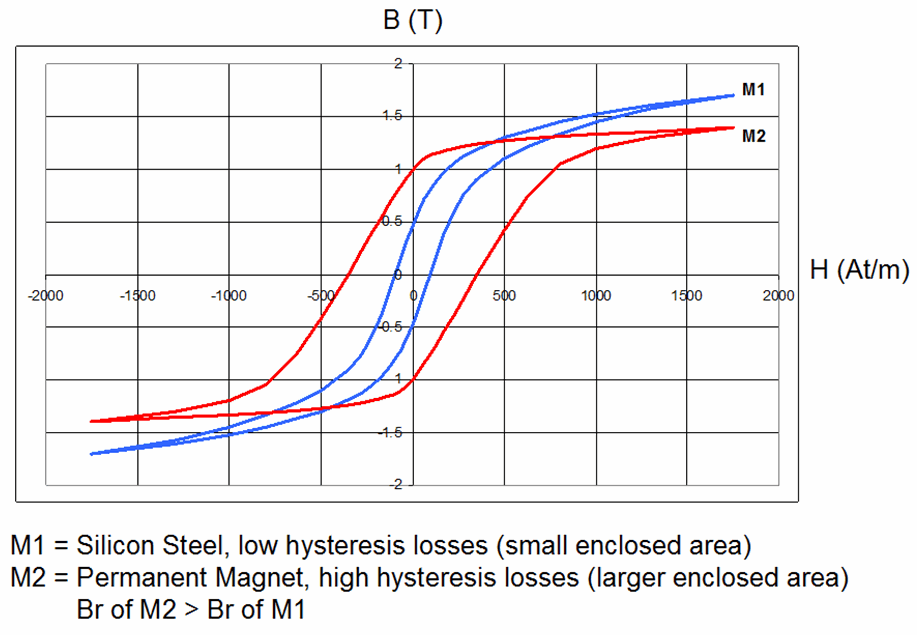


Experiments with magnets and our surroundings
Twelve Fundamentals of Magnetism
7. Hysteresis, B-H Curve
a. Links for this topic
http://en.wikipedia.org/wiki/Hysteresishttp://en.wikipedia.org/wiki/Magnetization
http://www.electronics-micros.com/electrical/b-h-curve/
BH Curve of Soft Magnetic Materials.pdf
http://www.vias.org/eltransformers/lee_electronic_transformers_03_03.html
b. What is it?
The B-H curve is the curve characteristic of the magnetic properties of a material or element or alloy. It tells you how the material responds to an external magnetic field, and is a critical piece of information when designing magnetic circuits. In the plots below, for a vacuum an H of 800 At/m creates a B of 1 mT. With a sheet steel core, an H of 800 At/m creates a B of 1.2 T. A huge increase in B for the same H! The hysteresis comes into play when the material has been magnetized. The B within the material does not go back to what it was before, but is dependent on the history of its magnetization.
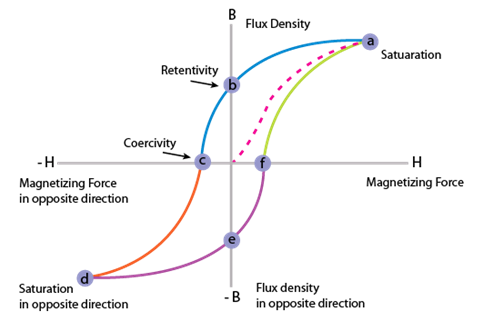
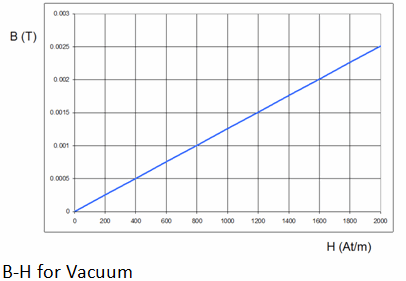
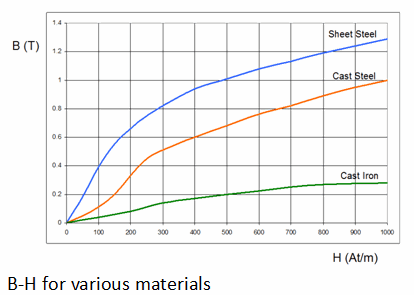
c. The slope of the curve - Permeability
The slope of the B-H curve at some location on its curve is its incremental permeability at that location. However, sometimes the permeability is measured from the origin to the location of interest, and that slope is called its apparent permeability, µ.
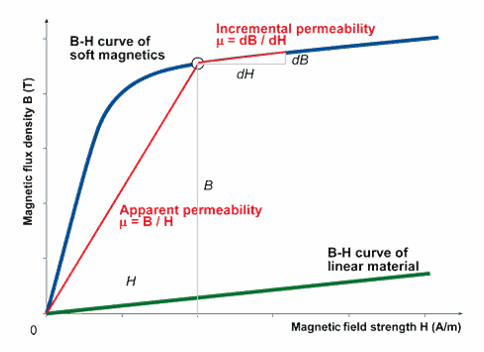
For non-magnetic materials that do not saturate, the curve has a fixed slope approximately equal to µ0
i. Diamagnetic materials have a slightly smaller slope
ii. Paramagnetic materials have a slightly greater slope
d. Critical points on the curve
For ferromagnetic materials that are non-linear, they have a µr that is much greater than 1, but when they saturate their µr approaches 1.
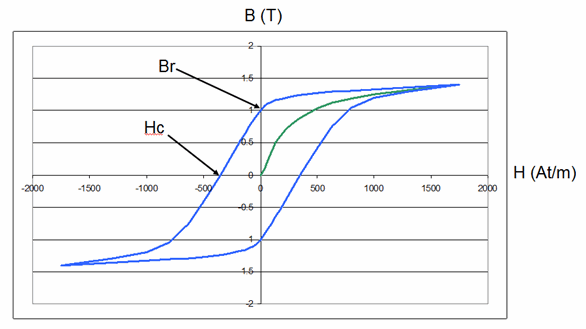
i. The residual magnetism, Br, or remanence (or retentivity), is the flux density that is left within the material after it has been magnetized.
ii. A material with a high Br is desired for permanent magnets.
http://en.wikipedia.org/wiki/Remanenceiii. The coercivity, Hc, is the magnetic field intensity that is required to demagnetize the material after it has been magnetized.
iv. A material with a high Hc is desired for permanent magnets to prevent them from being easily demagnetized.
v. Rare earth magnets have a much higher Hc than Alnico magnets.
http://en.wikipedia.org/wiki/Coercivityvi. The saturation effect of the material occurs when all of the magnetic domains within the material have become aligned with the external magnetic field that surrounds it.
e. Characteristics of soft magnetic material
i. A material with a very low Br and Hc
ii. It does not retain a strong magnetic field (does not make a good permanent magnet), and is easy to demagnetize
iii. The area enclosed by the B-H curve is small, so it has low hysteresis losses or core losses
iv. This material is desired for use in transformers, motors and electromagnets where the magnetic field is always changing.
v. Electrical steels, which contain about 1-2% Si, is a soft magnetic material.
e. Characteristics of hard magnetic material
i. A material with a very high Br and Hc
ii. It retains a strong magnetic field (makes a good permanent magnet), and is difficult to demagnetize
iii. The area enclosed by the B-H curve is large, so it has high hysteresis losses or core losses
iv. This material is desired for use in permanent magnets.
v. Alloys such as AlNiCo and NdFeB are hard magnetic materials.
